New senior design curriculum focuses on UAV development
Author: John Burnett-Larkins
Author: John Burnett-Larkins
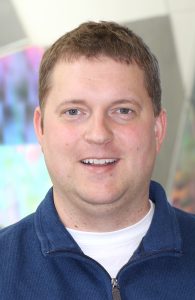
Travis Grager, associate teaching professor of Aerospace Engineering, spends many of his days teaching Iowa State students how to design, test, manufacture and fly unmanned aerial vehicles (UAVs).
Before becoming a professor, Grager was a graduate student at Iowa State. After completing his graduate degree he went to work at Physical Sciences, Inc., a research and development company based in Boston. While there, Grager developed a number of UAVs, primarily for use by the military. One of the UAVs Grager worked on was called the InstantEye drone.
“The primary UAV program that I worked on was the InstantEye family of quadrotor UAVs,” Grager said. “I was on the team that developed and marketed the original product. For quite a few years, I was the lead mechanical and propulsion designer for the UAVs. Eventually, our product really started to take off and I became a co-lead of the production team.”
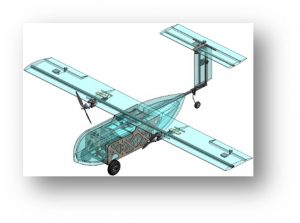
At Iowa State, Grager teaches the Aerospace Engineering aeronautics senior design courses, AER E 461 and 462, both of which focus on the development of small aircraft.
“In my classes, we teach students how to design and build small UAVs using various analysis tools and building techniques,” Grager said. “We have the students model their aircraft in CAD software such as Solidworks, perform CFD analysis in StarCCM+, and model propulsion, controls, and system sizing codes using various other software packages.”
The classes break up the development process; AER E 461 teaches students how to design aircraft and AER E 462 allows them to finalize their designs and test them in the wind tunnel, as well as build and fly them multiple times.
In the most recent semester, students designed a modular UAV that could be transported to the field in a carrying case, quickly assembled without tooling using magnetic fasteners, take off, loiter, deliver a payload, return and land. Students successfully completed all aspects of the final flight test.
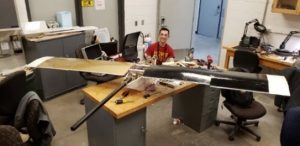
Aerospace Engineering Vance and Arlene Coffman Endowed Department Chair Dr. Alric Rothmayer notes that “Travis brings a wealth of real world experience to our aeronautics design program. This allows students to fully design, build and test realistic aircraft.”
Starting in the fall semester of 2020, the students now have access to a new dedicated aeronautics senior design space in 1365 Howe and also use the Make to Innovate (M:2:I) lab for small 3D printed parts. Grager said that the new access allowed gives students their own space, with computers and tooling to build and refine their designs.
The students also utilize the Aerodynamic/Atmospheric Boundary Layer (AABL) tunnel and the M:2:I lab as needed to perfect and test their designs, as well as the composite lab to build and test fiberglass layups, experiences they may not have in other classes.
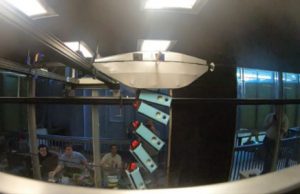
“We use the AABL wind tunnel for one week each semester to test a model of each team’s wing or wing and fuselage that they have designed,” Grager said. “This testing usually takes place just before midterm. From these tests, the students are able to validate the CFD analysis that they had completed for their design and compare it with the model they have built. Some teams are able to match their results well while others learn that they had problems in manufacturing their model and will make corrections to their building techniques prior to building their final aircraft.”
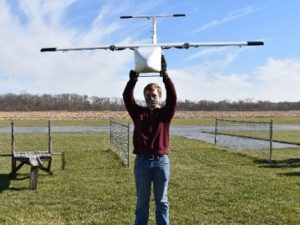
In addition to his Iowa State aircraft design sections, Grager leads an additional section of AER E 461/462 that takes part in a multi-university collaborative design effort. “Due to the loss of funding and difficulties of the pandemic at each university, only four universities decided to continue the program on their own this year,” Grager said. “These universities were Clemson, Purdue, BYU, and ISU. Each university has secured funding to support one team to build their aircraft, without any travel planned this year. Through this class, students learn how to work remotely with others across different time zones, which is a very important skill to have in the aerospace industry. The team I coached last year designed a UAV that would drop a communication device such as a walkie-talkie or cell phone to someone in distress or stranded after a natural disaster. The team I am coaching this year is designing an aircraft to inspect power line towers.”